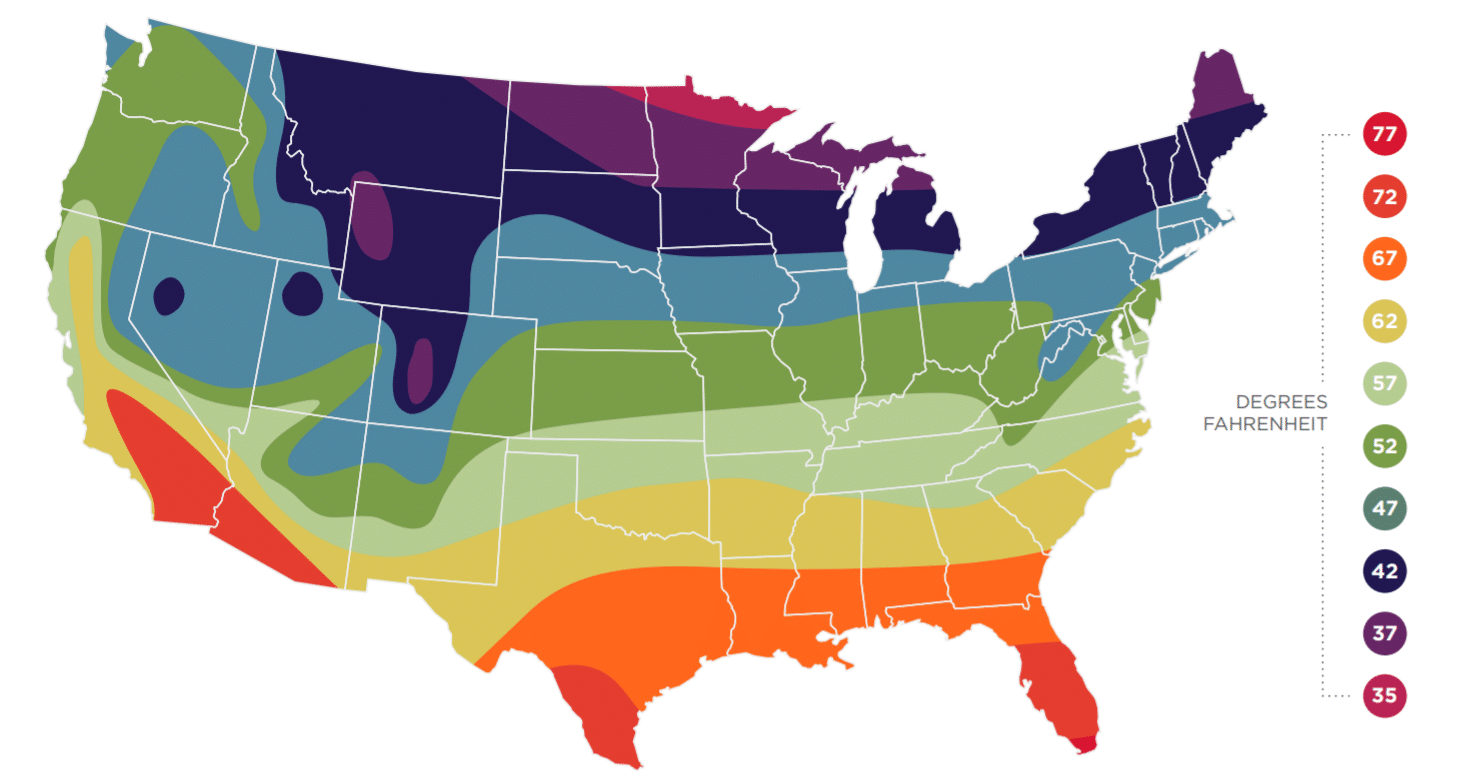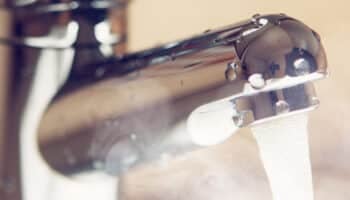Anyone with too small of a tankless water heater will tell you how much of an issue it can be.
Ever had to skip having a shower because someone’s washing the dishes? These small issues can really add up to be a big annoyance.
If you want to get the right size of tankless water heater, then you’re in the right place. In this article we’ll cover everything you need to know about getting the right water heater for your home or RV.
Hot water heaters are rated in Gallons per Minute (GPM). On average, choose 6 GPM for 1 bathroom (or an RV), and add 2 GPM for every extra bathroom (i.e. 10GPM for a 3 bathroom home). However, there’s more to it than that depending on your home and location!
If you want to get the full details to get the perfect tankless hot water heater for your home, read on and let’s dive into the details.
Sizing A Tankless Water Heater: Step by Step Guide
A tankless water heater is a device that heats water directly without storing water in a tank. Which is why it’s called tankless.
Before spending money on a new model, you need to size it correctly. (Else, you could run into problems. Much like the one above!)
To size a tankless water heater, you need to know 3 things:
- The groundwater temperature. This is the temperature of the water entering the heater.
- The target water temperature. (The water’s temp as it exits the heater.)
- The hot water flow rate. This refers to how fast the heated water flows and goes to your showerheads and faucets.
I’m sure you’ll understand these better with an example.
Let’s take things step by step.
(There are only 5 steps. And I’ll walk you through all of them. Keep your cool!)
1. Groundwater Temperature.
Let’s say you live in a cold region. The groundwater temperature in your place is at 45 degrees Fahrenheit.
This number tells you how warm or cold your groundwater is. Without a heater, you’ll be washing your hands or taking a shower at this temperature.
(Imagine 45 degrees F. That’s about 7 degrees Celsius. And that surely is cold!)
By the way, if you’re in the US, and you don’t know your average groundwater temperature, the map below should help.

In the market for a new tankless heater? Check out our guide to the best electric tankless water heaters
2. Target Water Temperature
This part is quite easy. Your only basis will be your own preference.
That is… how warm do you want your water to be?
Of course, you’d wish to take a comfortable, warm bath at, say, 105 degrees. This is your target water temperature.
Take note of this number as we try to do some math below.
3. Temperature Rise
Your numbers were 45 degrees F (from Step #1) and 105 degrees F (from Step #2).
105 – 45 = 60.
That’s 60 degrees of temperature rise. Notice how we got this result from the first two factors I’ve told you earlier.
For your convenience, I’ll spell it out…
The temperature rise is simply the difference between the target water temperature and the groundwater temperature.
This temperature rise is also known as ΔT (read: delta T).
The greater the temperature rise, the harder your water heater will have to work.
What was your number again?
ΔT = 60 degrees Fahrenheit.
And how did we get that number?
ΔT = target water temperature – groundwater temperature.
Now, what’s next?
4. Hot Water Flow Rate
To be specific, you’ll need the flow rate for each of your fixtures. You may have the following at home:
- A shower head
- A faucet
- A washing machine
Each one has a different flow rate.
All we need to do now is sum up the flow rates of these fixtures.
To help you out, I’ve prepared a simple table. It’ll show you the average flow rate for each type of fixture.
Note: GPM means ‘gallons per minute.’ This is the unit of measurement for the hot water flow rate.
| Fixture | Flow Rate (GPM) | |
|---|---|---|
 | Shower Head (Standard) | 2 |
| Shower Head (‘Rain’ Type; Common in Older Showers) | Up to 5 | |
| Body Sprayer Nozzle | 2 | |
 | Dish Washer (High Efficiency) | 0.5-1.5 |
| Dish Washer (Standard) | 2.5 | |
 | Faucet | 1 |
 | Washing Machine (High Efficiency) | 1 |
| Washing Machine (Standard) | 2.5 |
Let’s say (again) that you have the following fixtures:
- A (standard) showerhead (2 GPM)
- A faucet (1 GPM)
- A (standard) washing machine (2.5 GPM)
Add all those up, and you’ll get 5.5 GPM.
5.5 GPM is your total hot water flow rate.
5. Ideal Specs
This part should be a breeze since you already have your numbers.
To recap:
- Temperature rise, ΔT = 60 degrees Fahrenheit.
- Total hot water flow rate = 5.5 GPM (gallons per minute).
And that’s all you really need to know. For now.
A typical tankless water heater unit gives you ratings this way:
- 8 GPM at 40° F Rise
- 7 GPM at 50° F Rise
- 6 GPM at 60° F Rise
- 5 GPM at 70° F Rise
Notice a pattern there?
The greater the temperature rise, the lower the water heater’s flow rating.
Note: This is the rating on the water heater’s label. Not the rate you’ve calculated earlier.
Let’s take these numbers, for example: 8.4 GPM at 40° F Rise.
This means the water heater can give you 8.4 gallons of hot water per minute. That is if you only need to raise the water temperature, say, from 45° (your groundwater temp) to plus 40 degrees — that is, to 95° F.
But, if you want to take that comfortable bath temp — your warm 105° F shower — the temperature rise needed is 60° F (the one we’ve computed before). With this higher heating demand, your water heater can only give you up to 5.6 gallons of hot water per minute.
WAIT. Just how did we come up with that number?
Exactly! The water heater’s set ratings. The specs!
You see…
The higher the heating demand, the fewer gallons of hot water per minute for you.
Now how do you size a tankless water heater? Simple.
- Take your temperature rise and hot water flow rate.
- Find a tankless water heater that matches these numbers.
- Or, find a better tankless water heater. A model with higher ratings, so you’ll have some extra in case you need hotter water, or you need to use more fixtures at the same time!
Electric vs. Propane Tankless Water Heaters
A key decision for any tankless water heater is whether to go propane or electric.
After all, you would want a water heater that heats up your water without eating up your money!
So which type of tankless water heater is best?
In short, electric tankless water heaters are cheaper, more efficient, easier to operate and easier to maintain. On the other hand, a propane tankless water heater provides much more heating power than the electric.
Let’s compare in detail.
Budget
An electric tankless water heater is generally cheaper than a propane tankless water heater.
Some gas models come at around $1000 or more. To compare, you can already get a quality electric water heater at half the price.
Thermal Efficiency
Also, most electric tankless water heaters are 99% thermally efficient.
To compare, gas-powered tankless water heaters only have about 80 to 85% thermal efficiency at best.
Ease of Installation
Generally, propane tankless water heaters may be a bit more complicated to install.
Electric models are much less complex. They’re typically smaller. And they don’t require ventilation because there’s no gas combustion.
Operating Costs
Efficiency matters a lot when it comes to computing operating costs. As I’ve told you before, electric water heaters have higher thermal efficiency. They should be cheaper to use in the long run.
Some regions also have incredibly high gas prices. If that’s the case in your place, then an electric water heater may better help you with your bills.
Performance
To be fair, though, a gas-powered tankless water heater could be more powerful.
Usually, gas water heaters can deliver more hot water (above 8 GPM) than electric units. Of course, you can still find electric heaters with that rating, but they may be a little pricier.
That said, you may want to use a propane tankless water heater if there’s around 10 of you at home. And if you have higher heating demands.
Maintenance
Typically, if something is a little challenging to install, it can also be challenging to maintain.
And that’s the case for tankless water heaters. Gas heaters are usually more complicated to maintain than electric models.
To sum it all up, I think electric tankless water heaters are the clear winner here. In some cases, a propane tankless water heater may be better. Most likely, though, that’s only if you have extra BIG heating needs.
Whole House vs. Point of Use Water Heaters
What if you have plenty of water-needing appliances? Or, what if you live in a huge house with multiple shower rooms on multiple floors?
Should you have a whole-house / centralized water heater? One that functions for all your water heating needs at home?
Or, would it be better to have multiple point-of-use water heaters? That is, water heaters that are located immediately where you’re using the hot water?
I don’t really want to overwhelm you here, so let me just set up another table.
| Water Heater | Whole House | Tankless |
|---|---|---|
| Quantity | 1 For Whole House | 1 For Each: Shower, Laundry, Kitchen) |
| Location | Basement/Garage | Within Room |
| Installation | Complicated | Easier |
| Initial Cost | Moderate | Low for one, more for many. |
| Hot Water Delivery | May lag | Instant |
At the end of the day, it might all depend on the type of utilities you have at home. In the United States, most houses are designed to use a centralised water heating system.
In Europe, Asia, and the UK, it’s quite typical to see point-of-use tankless water heaters. You can also see them in apartments or condo units, especially in shower rooms where on-demand water heating is quite a must.
What Are The Pros & Cons of Tankless Water Heaters?
Not sure if you’re getting a tankless water heater?
Let me make you a quick list. I mean, two. One for the pros and one for the cons.
Note: I’ll refer to tankless water heaters in general. And I’ll be comparing against a conventional water heater — one that uses a tank (a.k.a., a tank storage water heater).
Pros of a tankless water heater
- Highly efficient
- Saves you money over time
- Typically eco-friendly
- Longer life (see how long in the next section)
- Space-saving (no tank!)
- Fit for instant, on-demand use
Cons of a tankless water heater
- Typically more pricey for multiple units
- May be costly to set-up if you’re replacing a tank storage water heater with it
- May fail to keep up with simultaneous hot water demands (if not correctly sized!)
How Long Does A Tankless Water Heater Last?
Quick answer: about 20 years. Some survive for as long as 30 years.
This is double the usual lifespan of a storage-tank water heater.
Well, all types of water heaters are subject to wear and tear.
If you have ‘hard water’ in your region, it may reduce the lifespan of your water heater.
How Do You Install A Tankless Water Heater?
Electric and gas tankless water heaters are installed differently.
Let me outline the steps for these two types.
Important! While the following installation steps look quite easy, it’s still best to ask the help of a professional. These are not for the inexperienced.
And these are just outlines, after all — not specified to the details of your home AND your water heater model.
Installing an Electric Tankless Water Heater
Here’s how a pro should do it. The expert will:
- Turn off the circuit breakers (all the ones involved).
- Close your main water supply.
- Drain your old water heater, if any. (And then disconnect it.)
- Take off the screws and the front cover of the new unit.
- Mount the unit to the wall.
- Connect the unit to the water lines. (It’s best to also install a shut-off valve, just meant for your new heater. Plus, a temperature & pressure relief valve. Licensed professionals should know this stuff!)
- Open hot water outlets to remove air from your water heater and pipes.
- Check your water connections for any leaks.
- Close all outlets.
- Make electrical connections and double-check.
- Attach the unit’s front cover.
- Turn the circuit breakers on.
- Turn your water heater on and set up your heating preferences (say, your target temperature).
- Try opening a hot water outlet. Then adjust the heater settings as you need!
Installing a Gas Tankless Water Heater
Again, the following steps will only give you a clue.
Remember, installing a gas tankless water heater is a little more complicated. Please, ask the help of a professional gas tankless water heater installer to do it for you.
Anyway, here’s how it typically goes. And this will be a shorter list for your sake.
A licensed professional installer will:
- Remove your old water heater, if any.
- Install a new gas line.
- Add new water lines.
- Mount your new water heater.
- Connect your water heater to the gas and water lines.
- Install the vent.
- Turn on your water heater.
Simple? For the licensed expert, yes.
Conclusion
Sizing a tankless water heater was just the first step.
I was pretty sure you also needed a few more details about tankless water heaters before deciding to buy a new one. Which is why we took a few more minutes together here!
(Thanks for reading all the way!)
Well, I hope you’re now excited to work on some numbers yourself. Remember, you only need 3 things to get the correct size for a tankless water heater.
(1) Your groundwater temp. (2) Your ideal hot water temp. And (3) the sum of the GPM ratings / hot water flow rate of your water fixtures.
Ready to have warmer showers? I hope I’ve given you all the help you needed.
Thank you for reading, and hope you have a great day!
– Craig






